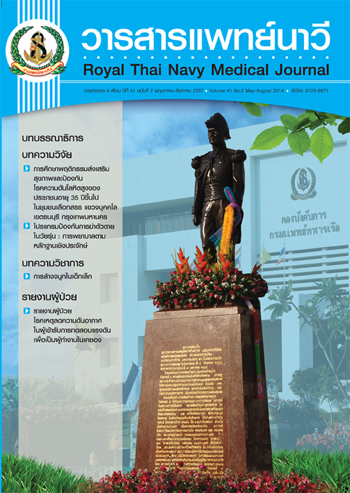โปรแกรมป้องกันการฆ่าตัวตายในวัยรุ่น : การพยาบาลตามหลักเชิงประจักษ์
Main Article Content
Abstract
The present study aimed at investigating suicide prevention programs by means of
an analysis and synthesis of research-based evidence. There were five research studies
which were selected in this study. Of these, two were randomized controlled trials, two were
research studies with a nonequivalent control group posttest only design, and one was a
systematic review of research. According to the analysis and synthesis, there are two types
of suicide prevention program. The first type consists of suicide prevention programs for
general adolescents with an emphasis on promotion of knowledge, adjustment of attitudes
toward suicide, promotion of ability to assess and observe warning signs of suicide of both
oneself and others, and asking for initial assistance. The second type of programs is composed
of suicide prevention programs for adolescents at risk or those who have been
assessed as having risk of suicide (having suicidal thoughts, threatening to commit suicide,
having suicide attempts, suffering from depression, and having abnormal thinking due to
substance abuse). Adolescents will receive individual assistance which emphasizes assessment
of suicidal risk behaviors and provision of immediate assistance through motivational
counseling and connect teens to social support network. After that, adolescents will be
referred to group assistance with an emphasis on emotional management, promotion of life
skills, and search for social support. It has been indicated that these programs are effective
in changing attitudes toward suicide and suicidal thoughts of adolescents. However, the
recommendations of the present study should be developed into clinical nursing practice
guidelines before actual implementation to suit the context of the workplace.


